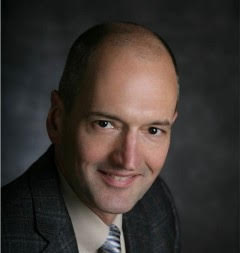Orthopedic surgeon Michael Chmell, MD, details how Rockford-based OrthoIllinois developed their outpatient total joint program and the center's next steps.
Question: How did OrthoIllinois implement a successful total joint program? What were some of the core obstacles your surgery center faced when performing total joints on an outpatient basis?
 Dr. Michael Chmell: OrthoIllinois Surgery Center has found that the key to implementing a successful outpatient total joint program was the planning and preparation, which was begun well prior to our first case. Aspects of this planning included development of detailed protocols regarding patient education, pain management, the day of surgery routine and post surgical plans. Also, education of our office staff and surgery center staff regarding the above was key. Lastly, these protocols were first trialed at a hospital to demonstrate their efficacy.
Dr. Michael Chmell: OrthoIllinois Surgery Center has found that the key to implementing a successful outpatient total joint program was the planning and preparation, which was begun well prior to our first case. Aspects of this planning included development of detailed protocols regarding patient education, pain management, the day of surgery routine and post surgical plans. Also, education of our office staff and surgery center staff regarding the above was key. Lastly, these protocols were first trialed at a hospital to demonstrate their efficacy.
Our biggest obstacle to getting started was obtaining payer contracts for outpatient joints. Having detailed protocols which had been tested at a hospital to present to payers was key in obtaining contracts. A second obstacle, was getting all four of our total joint surgeons on, or as close as possible, the same page with regard to these protocols, implants, surgical instruments, etc.
Q: What are some of your outpatient TJR's program essential elements? What does it take to maintain a successful program and how does your program stand out from other ASCs' programs?
MC: Essential elements of our total joint program include proper patient selection (particularly when beginning), extensive patient and family education and anesthesia/pain management. Additionally, we frequently re-examine the program to try and identify how we can improve, regarding our entire process of getting a patient from the office, to the surgery center, to home. Communication between staff, surgeons and anesthesia is key in this regard in order to identify any variations which could be widely implemented to enhance patient care and/or reduce costs.
This is what makes our program stand out. We have completed buy in from all the sources above to continually try and improve. We do not have four surgeons doing four different routines. There will always be some differences, however we meet regularly and have each compromised when needed to maximize patient care and surgery center efficiency, and to reduce costs.
Q: Where do you see total joints trending in the future, especially as healthcare transitions to value-based care?
MC: Currently we are exploring total shoulder arthroplasty on an outpatient basis. Our shoulder surgeons are going through a similar developmental plan as noted above and are at the stage of performing outpatient shoulders at a hospital. In the future, I would expect to see widespread bundling of payments for outpatient joints regarding not only the facility fee, but also the post acute care, as we are involved with currently regarding Medicare. Lastly, I am hopeful that with the success seen thus far with outpatient total joints, that in the future Medicare will come on board as well.
Learn more from Dr. Chmell at the 15th Annual Spine, Orthopedic & Pain Management-Driven ASC Conference + The Future of Spine in June 2017! Click here for more information.
More articles on surgery centers:
4 key thoughts on the AAAHC Institute ASC benchmarking studies & how ASCs can limit their inefficiencies
Vaughan Nelson Investment Management buys 150k+ AmSurg shares: 4 notes
Surgery Partners short interest falls 2.61% — 4 things to know

